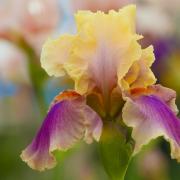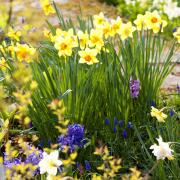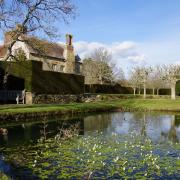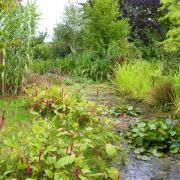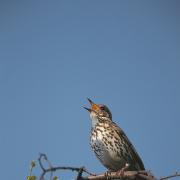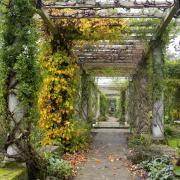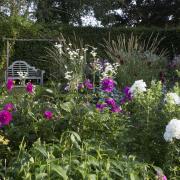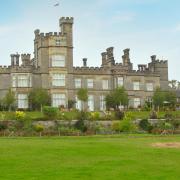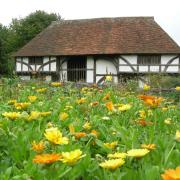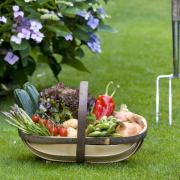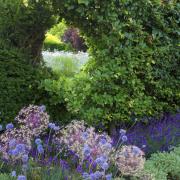Celebrate snowdrops this month by visiting a Sussex garden near you and discovering more about these dainty beauties

Whether you are a dyed-in-the-wool galanthophile or just raring to get out again to visit gardens, admiring pure white snowdrops amongst other early bulbs and flowers is an experience to be savoured. As the garden awakes, the first signs of spring begin to emerge and snowdrops or galanthus (the Latin name) are one of the earliest blooms. From January to March these dainty maids lead the way, unfurling each tiny pure white flower and standing proud as soon as the ice melts in their stems each morning. Snowdrops are hardy and it’s lovely to mix them with hellebores, or plant in naturalised drifts on lawns, against contrasting coloured winter stems or in troughs. They are best bought and planted ‘in the green’ as dried bulbs are more difficult to establish. Dappled shade and soil improved with leaf mould or compost are ideal and you should keep them watered until they are established. You are bound to come under the spell of these snowy stems, whether planted en masse, set against the rich red stems of cornus, or peeping out of pots.
Here are five of my favourite must-see gardens that showcase snowdrops. Three are open for this year’s National Garden Scheme’s Snowdrop Festival, which began in 2016. George Plumptre, chief executive of the National Garden Scheme explains: “Over the past few years the National Garden Scheme’s Snowdrop Festival has attracted tens of thousands of visitors to gardens. Following the restrictions of 2020 there has never been a greater need to start the new year with the beautiful freshness of the first blooms of spring. But garden visiting at this time of year isn’t just for galanthophiles who are looking to discover a rare variety of snowdrop in gardens they may never otherwise find. Snowdrops are the perfect antidote to the winter blues and spending the afternoon at one of our Snowdrop Festival gardens is the ideal opportunity to get outside and enjoy some spectacular scenes at an otherwise gloomy time of year.”
Pembury House, Clayton, BN6 9PH

Home to snowdrop experts Nick and Jane Baker, who have been opening their garden to visitors through the National Garden Scheme since 1992, this is a favourite with return visitors. The garden is open by arrangement in February and March, pre-booked through their website, pemburyhouse.co.uk, COVID-19 restrictions allowing. Described as “the perfect woodland garden” by a visitor, the three-acre garden is carpeted with over 200,000 naturalised common snowdrops (Galanthus nivalis), and around 50 special varieties, mingling with massed hellebores under a canopy of deciduous trees. Curving brick paths meander gently through the landscape and seats positioned to admire the vistas allow for quiet contemplation in this tranquil space, lit by the sea of white blooms. Look out for Galanthus ‘Mrs Thompson’ with its bell-shaped scented flowers, the stately ‘Blewberry Tart’ and ‘Daphne’s Scissors’, whose inner segments do indeed resemble a pair of scissors. A new addition to the medley is Galanthus elwesii ‘Mount Everest’, which has large flowers atop silvery-green, broad leaves. Nick and Jane also sell a range of snowdrops and hellebores that they have potted up, so you can try some in your own garden.
The Old Vicarage, Washington, RH20 4AS
Owned by Sir Peter and Lady Walters, with elegant layout and a fine variety of planting, the three acres have swathes of naturalised Galanthus nivalis, helped along by splitting and replanting, including in the woodland area. In addition extra bulbs are planted each year, including around 4,000 snowdrops, and some specimen varieties also grace the grassy rockery by the tranquil Japanese garden. Accompanying the display are hellebores, Anemone blanda and dwarf irises in purples, blues and green, including Iris reticulate ‘Pauline’ with fragrant purple flowers and violet-toned ‘George’. Snowdrop and bulb enthusiast Simon Hollingworth has been friend of the couple for around 25 years: “Originally some snowdrop labels were out of place and I got roped in to help identify which bulb was which,” says Simon. “The first snowdrops to flower here are Galanthus elwesii Hiemalis Group, which are out in some cases well before Christmas; there are still other types of elwesii in flower in February. At The Old Vicarage you may be lucky enough to see some G. Elwesii “Yvonne Hay”, which has very large flowers with a big green marking on the inner petals and very broad glaucous leaves. One of the large flowered G. nivalis variants to be seen is ‘Magnet’, which has a long pedicel, making it very sensitive to the slightest breath of wind. ‘Wendy’s Gold’ is an unusual Galanthus plicatus hybrid which should still be in flower in February,” he explains. The garden is planning to open in with social distancing every Thursday and also on 13 February for the festival, pre-booked. www.ngs.org.uk

5 Whitemans Close, Cuckfield, RH17 5DE
Here you will find a small and delightful cottage garden packed full of unusual plants, and in February you can enjoy the large snowdrop collection when it opens through the NGS. Owner Shirley Carman-Martin is a member of the Hardy Plant Society and has a passion for plants, growing much of her garden from seeds and cuttings. She has a great way of growing her 150 different varieties of snowdrops to make it easier to enjoy these tiny flowers up close. The majority are tucked into raised beds so you don’t need to bend down to see them, and they are all labelled making it an ideal opportunity to discover some lovely varieties you may not have seen before. In the garden there are some other early plants to enjoy, including the silk tassel bush, Garrya elliptica, crocus, irises, as well as fragrance and colour from daphne and witch hazel blooms, all giving wonderful support to the snowdrops. With paths all the way around the garden you can leave your wellies at home. Again you may need to pre-book a visit and teas if COVID rules allow. www.ngs.org.uk
A garden for all seasons. In February thousands of naturalised Galanthus nivalis and purple cyclamen mingle, forming a tapestry carpet that welcomes you as you step out from the visitor centre. In the Winter Garden these tiny bulbs make a big impact. Wakehurst was one of the very first gardens in the UK to have a dedicated winter garden area, planted in 1986 to the west side of the Elizabethan mansion. In 2018 the planting was re-done, using some 33,000 plants, including 16,000 snowdrops. The design emulates the feel of the Sussex landscape, and was inspired by winter walks on the South Downs. Swathes of grasses, scented witch hazels and daphne, and the stark white beauty of stately birch and peeling copper bark of Prunus serrula, along with vibrant stems of cornus, also draw attention as you stroll the meandering paths that cut through the area. www.kew.org/wakehurst
Nymans, Haywards Heath, West Sussex, RH17 6EB
Another favourite for winter strolling, with fine views and a wide variety of plants and areas to explore, Nymans attracts visitors in every season. The swathes of naturalised snowdrops are accompanied by intensely coloured red and gold cornus stems and mature camellias, as well as the fragrance of daphnes and bewitching Hamamelis wafting in the air. When lit by the low sunshine as it caresses these snowy maids the brilliance of white enlivens the spirit, whether en masse, in the woodland, along the winter walk or dotted on the lawns. Every autumn the garden team plants thousands of bulbs, including the similar-looking later-flowering snowflakes (Leocojum vernum) and over 1,000 snowdrops to increase the colonies of Galanthus nivalis ‘Viridapice’ and Galanthus elwesii. For the best snowdrops head to the walled and top garden areas, but you will also spot them across the garden. You may well see snowdrops and snowflakes merging together. The snowflake can be twice as tall as the more delicate snowdrop and has flowers that resemble tiny white lanterns tipped with green.
www.nationaltrust.org.uk/nymans




